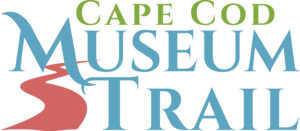As you make your way down Commercial Street in Provincetown, past much of the crowds, you enter the East End with its many galleries and the strikingly designed Provincetown Art Association and Museum.
From its eclectic outdoor sculpture to its exquisitely lit and expansive galleries, the museum is a portal to Provincetown’s grand art history, especially of its artists who enlightened the impressionist and modernist eras.
Walking through the museum is walk through time. You become engrossed in Provincetown’s history and culture, evoking a world that has slowly disappeared.
Established in 1914 by artists Charles Hawthorne, Oscar Gieberich, William Halsall, Gerrit Beneker, E. Ambrose Webster and several local business men and women, it quickly became a refuge of artists and expatriates returned from war-torn Europe.
Provincetown was firmly established as “The Biggest Art Colony in the World,” according to the Boston Globe. PAAM consolidated its role as the anchor of that colony through the purchase and refurbishing of its present building in 1919.
Today, there are about 3,000 works from artists who have lived or worked on the outer Cape, The collection is a burgeoning historical record of the original Provincetown art colony. PAAM continues to increase the number and range of works by earlier artists and to include works by contemporary artists through gifts to the collection.
Renovated in 2006, the museum now boasts 6,000 square feet, all-season climate control for humidity, cooling, and heating and venues for chamber music, jazz, lectures, and spoken word performances. New studio classrooms were installed to offer appropriate spaces for children, youth, and adult education programs.
A recent visit
So many paintings and photographs.
On a recent visit, we were particularly enamored of several. “Spring/Corn Hill” by Anne Boucher, depicted beautiful flowers before quintessential cottages. Nearby was Marc LaCasse’s “Blue Beard,” a photo of a man donning a painted blue beard, wearing a risqué police uniform and holding a string of beads as he rides down the streets of Provincetown. “Entropy High XIII” by Joerg Dressler, an oil painting that incorporates a dark mix of white, black, brown, and various shades of blue create a scene resembling that of a storm at sea.
What are your favorites?
As you meander through the museum, you come across a variety of different art form, recording an evolution of styles from the 1920s to present day.
Observing works from the 30s, you observe a more paint-heavy era with a focus on landscapes. Through the 40s and 50s, jagged, abstract paintings are featured. The 70s exhibits a spring of geometric work, with the use of shapes taking center stage. The new millennium bears a resemblance to the 50s with solid painting styles and line work, obtaining that same sense of abstractness.
Perhaps the most eclectic and attention-grabbing work we encountered was that of Lauren Ewing’s “Are We Dancing” series, displaying images of figures striking pose mid-dance. The use of micro-plastic dust, oil, and acrylic paint pulls each element together in a unique way. Its glitter-like dust and incorporation of color grab your attention. It creates a sense of movement and motion. It’s a youthful piece that adds life to the museum and to your day in Provincetown.
If you visit the museum this fall, you will enjoy:
Amy Arbus ,whose 24 color photographs pay homage to the late, great painters such as Cezanne, David, Ingres, Modigliani and Picasso. She was inspired by paintings that she had visited during her childhood in New York, images that defined painting for a generation, and moments of looking that collapsed the boundaries between public and private space.
Hilda Neily, whose strong interest in Plein Air Impressionist painting has motivated much of her art. She has studied at the Cape School of Art in Provincetown with Henry Hensche- the master impressionist who studied with and served as assistant to the painter Charles Hawthorne, founder of the Cape Cod School of Art.

Leave A Comment